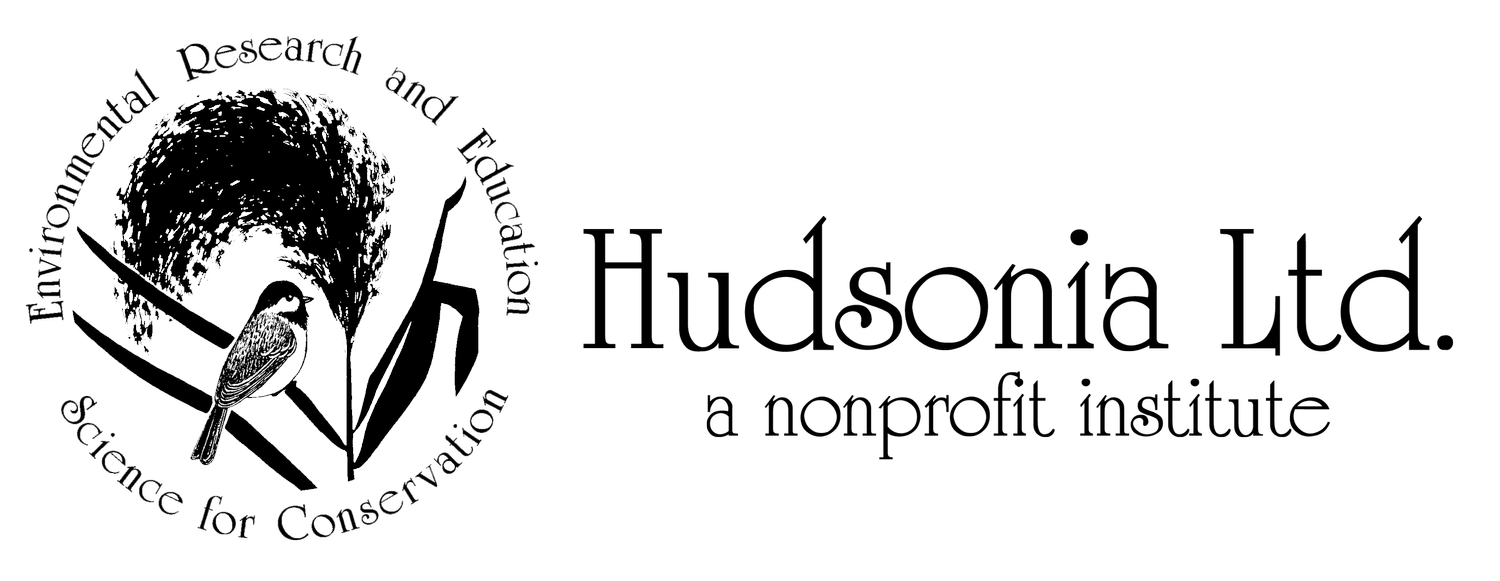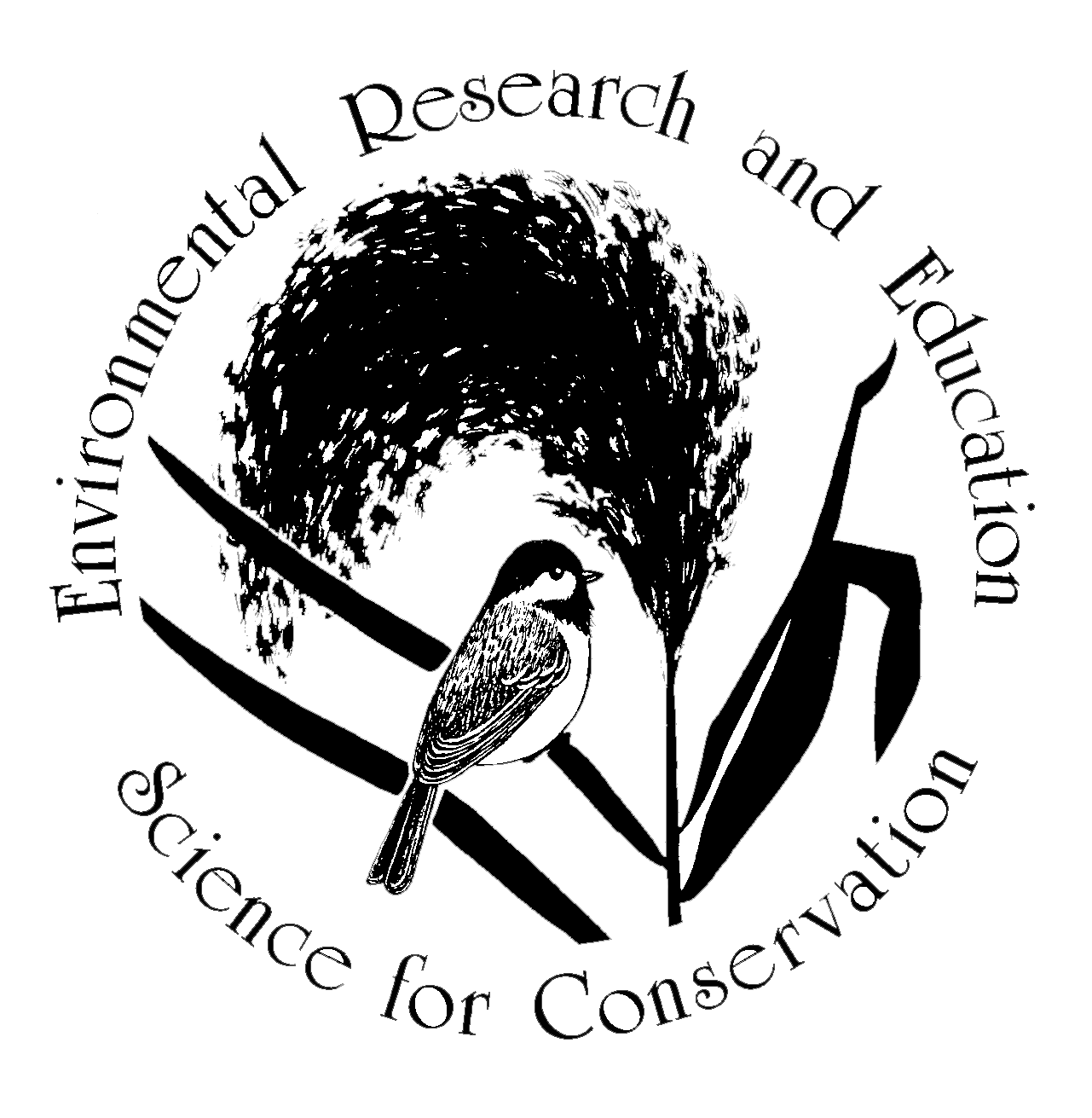Muskrat: Manager of the Marsh
Black Creek Marsh, Albany County, New York Photo credit: Hudsonia Ltd.
This is taken from an article Erik Kiviat originally published in News from Hudsonia, link below.
On a pleasant June day, as I rested by a muddy stream, I was astonished to see a bunch of blue forget-me-nots and other small wild flowers seem to swim across a pool in front of me. Soon a muskrat appeared, swimming behind the flowers, a muskrat with a bouquet in its mouth! The muskrat dove into its burrow to eat its pretty lunch in underground seclusion. Muskrats are relatively approachable and leave obvious signs of their presence, suitable for study by naturalists and casual observers alike. Yet most interest in muskrats has focused on fur, trapping, crop depredation, and damage to dikes and ditches. Animals affect their environments via feeding, trampling, building, and excreting, but little has been written about how the feeding and building of muskrats influence other biota and the marsh ecosystems. Here’s some of the missing information.
An adult muskrat is about fifty centimeters long including its nearly hairless and vertically flattened tail, and weighs about one kg. Native in much of the United States and Canada, the muskrat was introduced to other parts of North America as well as to Europe, and northern Asia. Within their Northern American range muskrats inhabit almost every pond lake, ditch, stream, and wetland, including rather brackish tidal marshes. Muskrats are active all year. They breed form April to August in the northern U.S. and year round on the Gulf Coast. From
muskrat lodge in winter
Where there are banks with cohesive soil, muskrats live in burrows. These are 10-15 cm in diameter and may be many meters long, with one or more underwater entrances and nest chambers above the water table. Away from suitable banks muskrats build lodges of plants and sediment in the shallow water or on floating mats. Lodges are 50-450 cm wide at the base, and 30-150 cm tall. Young are raised in lodges, burrows, or open nests. Muskrats also make feeding stations that resemble small lodges.
Cattails, bulrushes, arrowheads, wild-rice, wild-celery, and sweet flag are favored foods. Muskrats also eat other sedges, grasses, smartweeds, iris, duckweed pickerelweed, common reed, water-lilies, willow bark, horsetail, green algae, maize, apples, and many other wild and cultivated plants. Animals, especially freshwater mussels, are sometimes eaten. Foraging takes place within thirty meters of the dens in dense muskrat populations in marshes or as far as several hundred meters in sparse lakeshore populations. Food may be eaten where found or brought to dens or feeding stations. Muskrats may disperse (move to a new area) in spring and fall when they are often found in intermittent streams, culverts, new ponds and ditches, and dead on the road.
One to six or more muskrats may inhabit a lodge or burrow. In studies of large areas, marsh populations ranged from 0.03 to 86 muskrats per hectare, and stream population 0.06 to 0.23 per hectare. Marsh populations fluctuate greatly depending upon weather, water levels, ice, food supply, predation, trapping, and pollution. Population changes mean that muskrats affect their marsh and waterside habitats with varying intensity, altering soils, flora, vegetation, fauna, decomposition, and nutrient cycling.
Grass-like (graminoid) marsh plant such a cattails, bulrushes, and common reed, are fibrous and tough. Insects, birds, deer, and muskrats favor the young shoots, seeds, or underground parts which are more tender and nutritious. Although production of plant materials in cattail marshes is comparable to that of grain on good farmland, usually little of the marsh plant biomass is eaten while still alive. For food and lodge materials muskrats typically harvest about 5% of a marsh’s living biomass in a year, but under exceptional conditions called “eat-out,” muskrats may destroy nearly 100% of the vegetation. The ability of muskrats to dig up underground plant parts, gain nutrition from fibrous materials, eat a variety of pants, and also feed on animal matter allows efficient exploitation of the high productivity of marshes.
Muskrats consume about one-third their body weight daily in fresh plant matter, and produce feces contained large amount of finely ground fiber. Muskrats harvest 2-3 times more than they eat, storing some material temporarily in lodges and feeding stations. The “wasted” plant material from lodges and feces contributes to the stock of dead plant materials (detritus) that is colonized by microorganisms and eaten by a variety of invertebrates and a few fishes. Muskrat pre-processing of detritus presumable alters detritus-based food chains. Abandoned, rotting lodges, enriched by feces of muskrats and raccoons and by mussel shells, are the compost heaps of the marsh.
Muskrats, young and adult, are eaten by northern pike, snapping turtles, snakes, birds of prey, foxes, dogs, and especially mink. Many predators are part-time users of the marsh; they thus link marsh production with the nearby upland and aquatic environments.
Selective feeding by muskrats on favored food plants reduces dominance by cattail, bulrushes, and other aggressive species, creating space for many small plants. Muskrats noticeably thin the vegetation in a 5-8 + m radius of the lodge when building and feeding. Lodges are abandoned after six months to several years, and the clearing subsequently support developmental plant communities. Ducks, rails, and sparrows are attracted to seeds and insects in muskrat clearings. When muskrat populations are moderate, shifting lodge sites maintain a mosaic of vegetation and increase the diversity of plants and animal species and communities in the marsh. Sometimes these disturbed areas are more vulnerable to invasion by introduced weeds like purple loosestrife and common reed.
Burrowing animals aerate, mix, and otherwise alter the soil. Collapsed and eroding muskrat burrows create hummocky surfaces along waterway banks, and form varied sties for plant growth. Abandoned lodges and excavated areas in the marsh also provide high and low spots for different kinds of plants. The rooting, probing, digging, and trampling of muskrats, birds, snapping turtles, alligators, and bottom feeding fishes resuspend sediments and help keep marsh pools and channels from filling in.
Many marsh and aquatic plants can become established in new locations by means of the rooting of tubers, stem fragments, or other vegetative propagules. This capacity avoids the difficulty of seed germination and establishment on flooded, oxygen-poor, and often unstable soil. Muskrats leave pieces of cattail and sweetflag rhizomes, smartweed stem bases, and broadleaf arrowhead tubers on lodges and feeding stations, and floating in quiet water, thus contributing to plant dispersal.
Any animal that makes burrows in the soil, cavities in tree trunks, pools in the marsh, clearings in dense vegetation, or nests of plant matter or soil is host to other animals seeking shelter, foraging areas, and nesting sites. Natural or human-caused changes in host populations also affect the guests. The relatively dry, raised structures of muskrat lodges and burrow chambers are especially attractive places in the wet marsh. Perhaps 100 species of vertebrates use muskrat burrows and lodges. Prominent guests include small fish hiding in burrow entrances; turtles laying eggs in the outside of, basking on, and hibernating beneath, lodges; waterfowl and terns resting and nesting atop lodges; and carnivores and rodents sleeping, rearing young, scent marking, and foraging for non-muskrat food. As many as 26 snapping turtles have been reported form a single muskrat burrow, and up to 8 Forster’s tern nests on one muskrat lodge. Other animals are frequently caught in traps set for muskrats in their burrows and runways. Some animals are greatly benefitted by their use of muskrat architecture, and little harm is caused to the muskrats. Nonetheless, no other animal is known to require muskrat lodges or burrows. Manipulation of muskrat populations for fur or to protect crops and dikes, however, also affects symbiotic species.
Muskrat populations in Hudson River tidal marshes have been abnormally low since about the mid-1970s, with apparently different trends in different marshes. Toxic substances (e.g. cadmium, herbicides, fungicides, dioxin), disease, racoon predation, and vegetation change could be factors contributing to the declines. [IS THIS STILL TRUE] Additionally, muskrats can be vulnerable to overtrapping in tidal marshes. At Tivoli Bays, the population crashed ca 1974, and has increased only modestly in the last several years. Sweetflag and hybrid cattail, both preferred muskrat foods, increased in the late 1970s and early 1980s, as did common reed. Muskrat clearings in the cattail, supporting secondary plants such as smartweeds, burr-marigolds, and mid-sized grasses, all but disappeared until recently. Two large intertidal pools have gradually silted in, perhaps partly due to lack of muskrat harvesting of the cattail and other plants. Common moorhen and sora disappeared from the breeding bird community, possibly due to the loss of pool and clearing habitat.
We do not know what muskrat densities or fluctuations are optimum in northeastern tidal and nontidal marshes, but we believe muskrat influences are importance to the maintenance of native biological diversity in marshes. Furthermore, a normal muskrat population is one of many indicators of the ecological integrity of a marsh. Biologists interested in the conservation, management, and restoration of marshes should look for ecological information in the past and present activities of muskrats.
You can down load a pdf file here and review all footnotes and references.
Muskrat, marsh, marsh ecology



